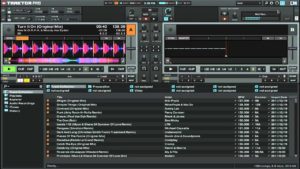 Has this ever happened to you: you announce a training session that will be delivered in a live virtual classroom and someone who would like to attend but cannot asks if he or she can get access to the recording. Recording virtual classroom training is usually just a matter of learning how to set up the recording and how to retrieve it so you can share it with others.
Has this ever happened to you: you announce a training session that will be delivered in a live virtual classroom and someone who would like to attend but cannot asks if he or she can get access to the recording. Recording virtual classroom training is usually just a matter of learning how to set up the recording and how to retrieve it so you can share it with others.
Recording a session can be beneficial, however, the real question to ask is whether or not it makes sense to record and how the recording could impact the live session. For example, last week at my work at the World Bank, we offered a session on women’s security issues when traveling in Latin America. Some women who wanted to attend had conflicts and it was tempting to record the session so they could listen to it on their own. However, we wanted participants to share personal experiences during the session and we thought that recording might inhibit sharing, so we opted for no recording.
Think about bringing a video camera into a face-to-face training session, announcing to participants that you will be recording the training, then posting on the company intranet. Would participants behave differently because of the camera in the room?
While recording training in a virtual classroom is much more subtle (participants may not even know that they are being recorded), thinking through the impact of a recording is worthwhile. Here are few items to consider:
Tell participants they are being recorded
Announce at the beginning of the session that you are recording and explain how the recording will be used and who will have access to it.
Encourage people to attend the live session
Don’t offer the recording to people as an equal substitute for participating in the live virtual classroom. Offer the recording to those who may need to leave early or to those who participated and want to review some sections of the course.
Record sessions that focus on process, policies, and systems
Sessions that are business oriented are good candidates for recording. Examples include training on software or web applications, new hire orientation, training on a new industry regulation, etc.
Use discretion when recording sessions that encourage self-reflection, personal stories.
Sessions where you want participants to share personal stories or experiences may not always be good candidates for recording. This includes leadership training, career management, communications training, conflict resolution, etc. Typically at the beginning of these types of training sessions the facilitator contracts with participants to agree that what is shared in the classroom, stays in the classroom. If you record this type of training, a participant may decide not to speak up and add to the discussion for fear of the recording getting into the hands the wrong person.
Edit the recording
There may be some session where you have encouraged personal stories that are not appropriate to share with a wider audience, however the session also includes valuable gems that are worth sharing with those who couldn’t attend the training. For example, let’s say your leadership training includes a personal testimonial from a senior leader who is the course sponsor who has weathered thousands of issues of all types. You may want to share his/her valuable insights with a broader audience. If you decide to record a session like this, use your power as the producer to edit the recording, keeping the gems and removing information that may be too personal. You will gain the trust of your participants using this technique if you tell them that you will edit the recording prior to releasing it.